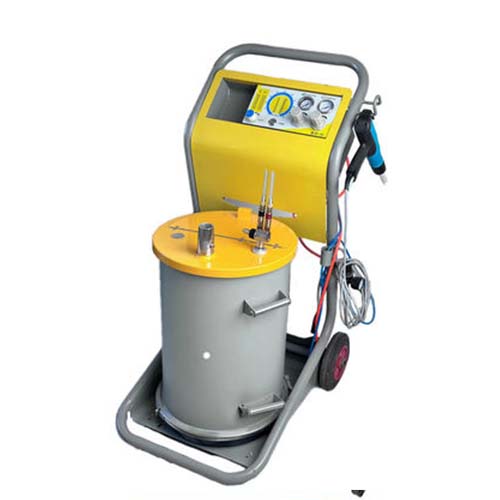Rotor Powder Coating Machine A Buyer s Essential Guide
Rotor Powder Coating Machine serves high demand in motor and generator manufacturing. These machines coat rotors to enhance durability and electrical insulation. Prices vary: basic models start around $10,000, while industrial-grade ones with automation reach $50,000+, based on rotor size and production capacity.

Rotor Powder Coating Machine Coating Project Introduction
Rotor Powder Coating Machine is key in projects focused on motor rotors for appliances, industrial machinery, and automotive systems. These projects require uniform coating to protect rotors from heat, moisture, and wear. The machine ensures consistent coverage on rotor surfaces, including slots and edges, critical for optimal motor performance.
Rotor Powder Coating Machine Coating Surface Treatment Process Technology
Rotor Powder Coating Machine uses a precise process. Rotors first undergo degreasing and blasting to remove contaminants. Then, an electrostatic spray system applies powder, which adheres to the rotor’s metal surface. The coated rotor enters a curing oven, where heat (180-220°C) melts the powder into a hard, smooth film. This technology ensures strong adhesion and even thickness, vital for rotor functionality.
Rotor Powder Coating Machine What Is It
Rotor Powder Coating Machine is specialized equipment designed to apply powder coatings to rotors—key components in electric motors and generators. It combines mechanical handling systems to rotate or move rotors through the coating process, ensuring all surfaces receive coverage. The machine is engineered to handle rotor shapes and sizes, from small appliance rotors to large industrial ones.
Rotor Powder Coating Machine Components
Rotor Handling System: Moves rotors through each process stage. It may include conveyors or robotic arms that rotate rotors for 360° coating coverage, adapting to different rotor diameters and lengths.
Electrostatic Powder Spray Unit: Features nozzles positioned to target rotor surfaces, including slots. It charges powder particles to ensure they stick to the rotor’s metal surface evenly.
Curing Oven: A temperature-controlled chamber where coated rotors are heated. It maintains consistent heat to ensure the powder melts, flows, and forms a durable coating, with timers to control curing duration.
Rotor Powder Coating Machine Advantages
Rotor Powder Coating Machine offers superior coating uniformity, critical for rotor performance. It reduces material waste compared to liquid coating, as excess powder can be recycled. The process creates a tough coating resistant to heat and chemicals, extending rotor lifespan. Automated models boost production speed, making them ideal for high-volume manufacturing.
Rotor Powder Coating Machine Q&A
How to Select the Right Rotor Powder Coating Machine for Your Production Line
Consider rotor size—ensure the machine handles your largest and smallest rotors. Check production volume: automated machines suit high output, while manual ones work for small batches. Look for adjustable spray settings to handle different rotor designs, like slotted vs. smooth surfaces. Evaluate curing oven capacity to match your production speed. A Rotor Powder Coating Machine that aligns with these factors improves efficiency.
How to Operate a Rotor Powder Coating Machine Safely
Train operators to use protective gear: heat-resistant gloves, goggles, and respirators to avoid powder inhalation and burns. Ensure the curing oven has proper ventilation to release fumes. Keep emergency stop buttons accessible and test them regularly. Never open the oven during curing, as high temperatures can cause burns. Follow lockout-tagout procedures when maintaining the machine. Safe operation of Rotor Powder Coating Machine prevents accidents.
How to Maintain a Rotor Powder Coating Machine for Consistent Performance
Clean spray nozzles daily to prevent clogs that cause uneven coating. Inspect the rotor handling system weekly for wear, lubricating moving parts as needed. Calibrate the curing oven’s temperature controls monthly to ensure accuracy. Check powder feeding systems for leaks, which waste material. Regular maintenance keeps Rotor Powder Coating Machine running smoothly and reduces downtime.
How to Troubleshoot Coating Defects in a Rotor Powder Coating Machine
If coating is too thin, increase powder flow or slow rotor movement. Bubbles indicate contaminated rotors—improve cleaning steps. Uneven coverage may mean misaligned spray nozzles; adjust their position. Cracks in the coating suggest insufficient curing time or temperature—increase either as needed. Troubleshooting these issues ensures your Rotor Powder Coating Machine produces quality rotors.
How to Optimize Powder Usage in a Rotor Powder Coating Machine
Recycle excess powder using a recovery system to reduce waste. Adjust spray nozzle distance—6-8 inches from the rotor minimizes overspray. Use the correct powder type for your rotor material; some powders adhere better with less usage. Monitor powder flow rates to avoid over-application. These steps lower costs while maintaining quality with Rotor Powder Coating Machine.
Links:
 Leave us message
Leave us message

